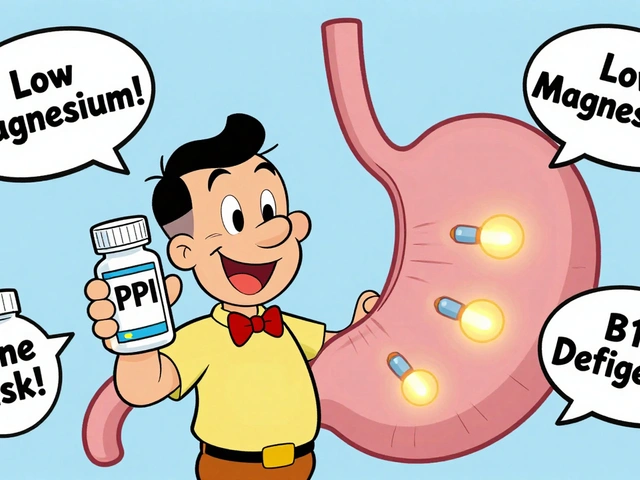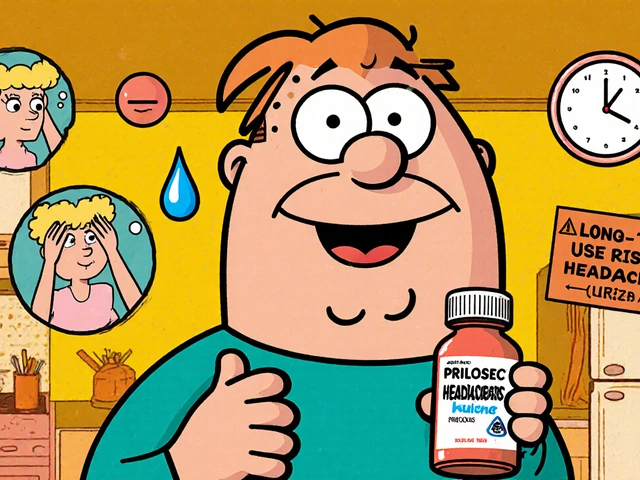SGLT2 Inhibitors: What They Are and Why They Matter
When talking about SGLT2 inhibitors, a class of oral medicines that block the sodium‑glucose co‑transporter‑2 protein in the kidneys, causing excess glucose to be expelled in the urine. Also known as sodium‑glucose co‑transporter‑2 inhibitors, they were originally developed to lower blood sugar in type 2 diabetes, a chronic condition where the body either resists insulin or doesn’t produce enough of it (sometimes called type‑2 diabetes mellitus). Over the past few years, research showed that the same mechanism also helps patients with heart failure, a state in which the heart cannot pump blood effectively, leading to fluid buildup and reduced exercise capacity (or cardiac insufficiency) and those dealing with chronic kidney disease, the progressive loss of kidney function that impairs waste removal and fluid balance (CKD). In short, SGLT2 inhibitors bridge blood‑sugar control and organ protection, a combination that reshaped modern diabetes care.
How SGLT2 Inhibitors Work Across Different Conditions
The core action is simple: by inhibiting the SGLT2 protein, these drugs prevent glucose from being re‑absorbed in the proximal tubules of the kidney. The result is glucosuria – the excretion of glucose in urine – which lowers plasma sugar levels without increasing insulin demand. This mechanism also leads to a modest loss of calories, modest weight reduction, and a mild diuretic effect that eases blood pressure. Because the heart and kidneys are highly sensitive to fluid status and blood pressure, the diuretic‑like effect translates into better outcomes for heart failure patients, reducing hospital admissions and mortality. Meanwhile, for those with chronic kidney disease, the reduced intraglomerular pressure slows the decline of kidney function, as documented in several large trials. The triple benefit – glycemic control, cardiovascular protection, and renal preservation – makes SGLT2 inhibitors a cornerstone of contemporary oral antidiabetic drugs, medications taken by mouth to manage blood sugar, as opposed to injectable insulin.
Because the benefits span multiple organ systems, prescribing guidelines now often recommend an SGLT2 inhibitor early in the treatment algorithm for eligible patients, even before they develop overt heart or kidney complications. The typical dosage is once daily, taken with or without food, and the drugs have a low risk of causing severe hypoglycemia when used alone or with metformin. However, clinicians watch out for side effects like genital yeast infections, urinary tract infections, and, rarely, ketoacidosis in patients with low carbohydrate intake. Patient education focuses on hygiene, staying hydrated, and recognizing early signs of infection. These practical steps keep the therapy safe while unlocking its full potential.
Below you’ll find a curated list of articles that dive deeper into the many facets of SGLT2 inhibitors. Whether you’re curious about the latest cardiovascular outcome trials, need tips for safely starting therapy, or want to understand how these drugs compare with other oral antidiabetic classes, the posts below cover a wide range of real‑world questions. Scan the titles, pick the topics that match your situation, and get actionable insights you can use today.

SGLT2 Inhibitor Side Effects: Dehydration, Dizziness, and Blood Pressure Changes Explained
SGLT2 inhibitors like Jardiance and Farxiga help lower blood sugar but also cause fluid loss, leading to dehydration, dizziness, and lower blood pressure. Learn who's at risk and how to stay safe.

Forxiga (dapagliflozin) vs Other SGLT2 Inhibitors: Full Comparison
A detailed side‑by‑side look at Forxiga (dapagliflozin) and its main alternatives, covering efficacy, safety, cost and cardiovascular benefits.





